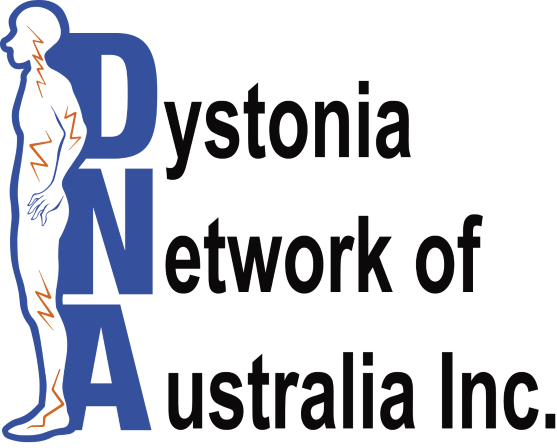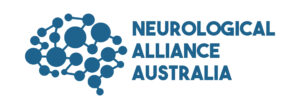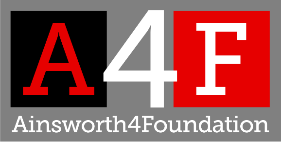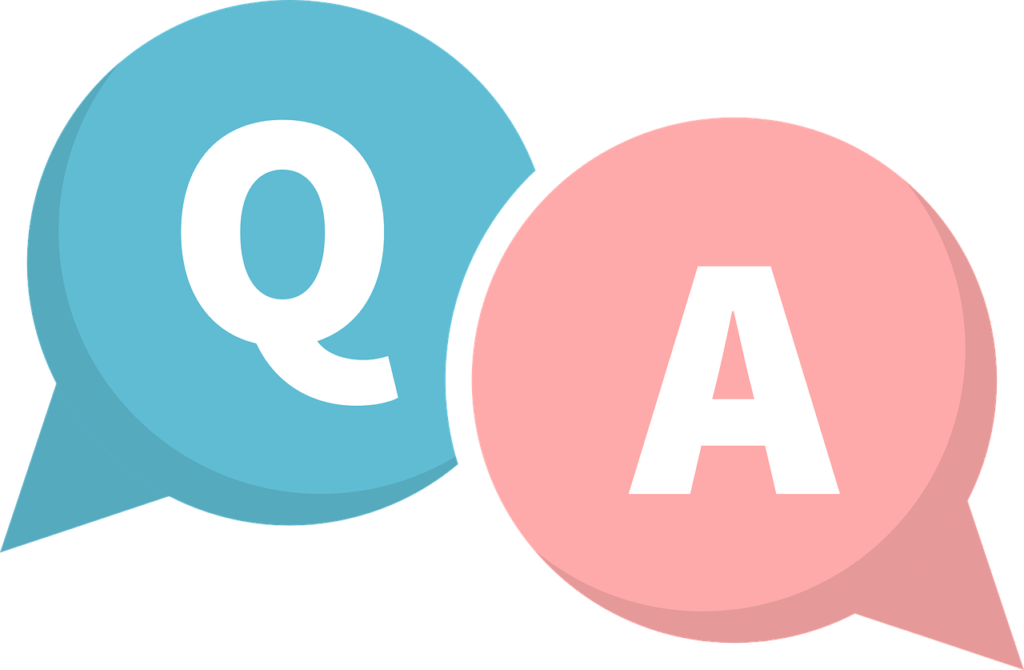
Welcome to our series of short interviews with interesting people living and working in the dystonia space. New interviews are being published during Dystonia Awareness Month in September 2024. They’re only a 5 minute read and we hope you will find them entertaining and informative!
On this page:
- 5 Minutes with neurologist, French student and ex musician – Dr Steven Tisch
- 5 Minutes with neurologist, neurogenetics researcher, keen chef and science fiction fan – Associate Professor Kishore Kumar
- 5 Minutes with dystonia researcher, avid golfer and self confessed terrible tourist – Dr Daniel Corp
- 5 Minutes with life coach, author, dystonia advocate and plant collector – Tom Seaman
- 5 Minutes with dystonia researcher and foodie – Jordan Morrison-Ham
- 5 Minutes with clinical trial participant and world traveller – Chris Gavenlock
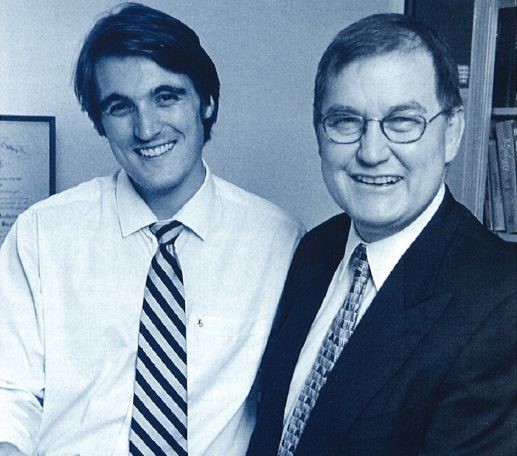
5 Minutes with Dr Stephen Tisch
Dr Stephen Tisch is a Consultant Neurologist at St Vincent’s Hospital, Sydney and an Associate Professor at the University of New South Wales (pictured on the left with his mentor, the late A/Prof Paul Darveniza – photo courtesy of St Vincent’s Hospital).
Steve was it always your ambition to be a neurologist?
I was fairly certain I wanted to study medicine late in high school. Then my desire to study neurology developed during physician training as a hospital registrar. It was by far the most interesting speciality I had encountered, and I developed a strong interest in it.
You specialise in movement disorders. How did that come about?
Once I started neurology training I was exposed to some excellent mentors, some of whom specialised in movement disorders. This galvanised my interest in the subject and set me on a path of further study pursuing movement disorders as my subspecialty.
Who were your role models or people you looked up to when you were young?
As a child I admired my parents and siblings, and some of my school teachers, who were particularly inspiring. As I moved through university and post graduate medical training there were several important mentors, but perhaps one of the most important was my late friend Dr Paul Darveniza, a neurologist at St Vincent’s Hospital in Sydney.
You studied medicine at the University of Tasmania. Can you tell us about your interests and hobbies at that time?
Growing up I liked outdoor activities and had some hobbies like woodwork. Later at Uni I was in a band called “The Steps” and we had a small following and performed regularly in pubs in Hobart. We played original songs and a few covers. Our usual venue was the Doghouse Hotel, which in those days was a rowdy pub, but it’s now been converted to backpacker accommodation. I’m still friends with the members of the band, and it was very enjoyable at the time.
You were involved in pioneering a treatment for tremor in Australia called MRgFUS (MRI guided focused ultrasound – a non-invasive procedure for the treatment of tremor). Could you tell us a bit about that?
With Dr Yael Barnett, Neuroradiologist, and Dr Ben Jonker, Neurosurgeon, we co-established Australia’s first MRgFUS unit, and performed the first MRgFUS thalamic intervention for tremor is Australia in 2018. To prepare for our service I studied MRgFUS overseas in London and Madrid and spent time in Paris as well doing a sabbatical in movement disorders in 2017. Since then, we have treated 185 patients and published research articles in the area of MRgFUS for tremor and dystonia. We have treated numerous patients with dystonic tremor with good results, and recently completed enrolment for a pilot study of MRgFUS for focal hand dystonia. MRgFUS holds promise for future treatment in dystonia and I’m excited about its potential.
What a fantastic achievement! Do you have any ambitions that you haven’t yet achieved?
There are still many questions in movement disorders that remain unanswered, and I’m keen to continue clinical and research work to further knowledge and treatment. I particularly enjoy supervising and mentoring Fellows and PhD students as we work on projects together. I think being a neurologist is a commitment to life-long learning, so while I still have that desire, I will continue.
You must have precious little spare time. How do you like to spend your weekends?
I enjoy spending time with my family. My older children are at Uni and more independent, but I still have a 9 year old and we enjoy playing table tennis or watching movies together.
Do you have any talents that your patients may not be aware of?
I’m studying French and take classes each week, but I still have a long way to go! I really love French and hope to progress in French language. One of the best ways to learn is to live in France and I would love to go back to France in the future and spend more time there.
Thank you very much Steve – merci beaucoup! We wish you all the best with your ongoing research and your French.
Note: For more information about MRgFUS and the pilot study at St Vincent’s Hospital to which Dr Tisch refers, please watch this short video by Dr Joel Maamary.
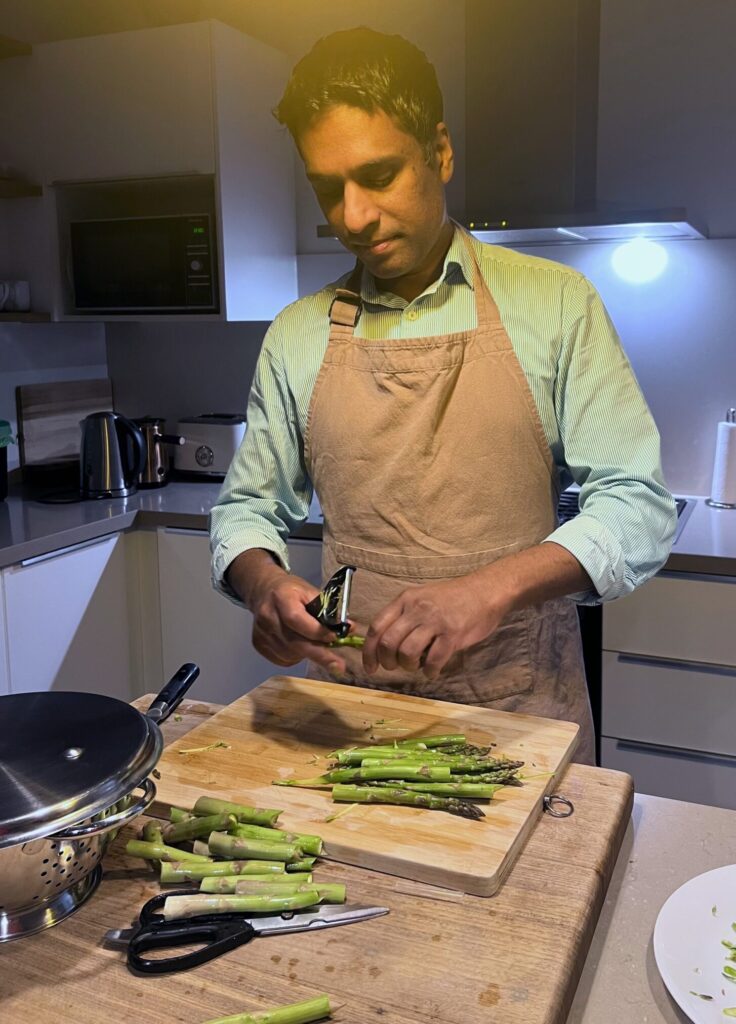
5 Minutes with Associate Professor Kishore Kumar
Associate Professor Kishore Kumar is a neurologist specialising in neurogenetics. He is passionate about understanding the genetics of dystonia. He works as a neurologist staff specialist at Concord Hospital and leads the Translational Neurogenomics Group at the Garvan Institute of Medical Research.
Kishore, you’ve got some pretty impressive qualifications in the field of genetics and movement disorders. What led you into this area of study?
Thank you very much. I was interested in neurogenetics from the time I was a neurology registrar. In 2009 I took up a fellowship with Professor Carolyn Sue which was focused on neurogenetics. She supervised my PhD studies from 2011 until 2014. I also had the opportunity to live in a town in Germany called Lubeck, where I spent 2 years of my PhD as an overseas elective with Professor Christine Klein. I loved neurogenetics and I kept working on it with a postdoctoral fellowship at the Garvan and now run neurogenetics research programs including the Ainsworth 4 Dystonia Genetic Research Mission.
You’re the leader of the Translational Neurogenomics Group at the Garvan Institute of Medical Research in Sydney. Can you explain, for those of us without a scientific background, what the group does?
We recruit participants who are suspected to have genetic or familial movement disorders such as dystonia. We perform clinical assessments in person or over telehealth. We collect tissue samples and arrange advanced genetic studies. We interpret the results ourselves. Sometimes, laboratory studies are required to understand the genetic findings further. We return the results back to participants, working closely with clinical geneticists and genetic counsellors to provide information to participants.
What does your current dystonia research project involve?
Using blood samples, we are studying the whole genetic code (whole genome sequencing). We are also taking a small skin sample known as a fibroblast biopsy. Using the skin biopsy, we are looking at gene expression, this is known as “transcriptomics”. By matching the whole genome sequencing data with the transcriptomics, we hope to improve the chances of a diagnosis and learn more about disease mechanisms underpinning dystonia.
Additionally, we’ll be using a new technology known as long read sequencing. The long read sequencing is an exciting advancement which provides additional information such as identifying stutters in the DNA (known as short tandem repeats) which can cause disease (repeat expansion disorders).
What do you hope to achieve with this research?
We aim to give patients a definitive genetic diagnosis by integrating our research into their clinical care. A genetic diagnosis can be immediately helpful by allowing patients to have genetic counselling and advice about passing on genetic mutations, and providing information on disease prognosis and response to treatments such as deep brain stimulation. Finally, the hope is that one day genetics can drive improvements in clinical care.
Do you need more volunteers for the project?
Yes, we are trying to get as many participants as possible. We are prioritising participants with generalised or segmental dystonia, young at onset, positive family history, or dystonia with additional neurological features (“combined” or “complex” forms of dystonia). The reason we are prioritising these patients is because we know that there is a higher chance of finding a genetic diagnosis.
(Learn more about this research project here)
Are you able to say how many genes are known to be involved with dystonia?
There are many genes associated with dystonia (hundreds). However, using the database ‘Online Mendelian Inheritance in Man’, there are 37 different official genetic forms. I‘ve been lucky enough to have helped identify at least 4 of those genes.
What a tremendous achievement – congratulations! It seems the field of genetics is expanding rapidly. How do you keep pace with it all?
I check the medical literature nearly every day. I’m always on the lookout for new discoveries in genetics and dystonia. I also work in journals as a reviewer, on the editorial board of the journal Movement Disorders, and as associate editor of the Australian neurology journal BMJ Neurology Open. When you write papers you need to keep on top of the literature to make sure your research is novel. Also, there are many scientific meetings and conferences where we learn about each others’ research.
Can you take your scientist’s hat off for now and tell us what else interests you?
I really like cooking and I’m constantly looking for new recipes and watching cooking shows. I’m a big fan of science fiction, both TV shows and books. Most of my spare time is spent with my family and we have two daughters who keep us very busy, particularly on the weekends.
What dish are you cooking in your photo?
I was cooking a Jamie Oliver recipe “hot-smoked salmon pasta”. I like his recipes because they are very simple and usually healthy. My favourite food would be lamb or steak dishes. I like to make and eat lamb including lamb cutlets and slow-cooked lamb shanks or lamb shoulder. When I go out, I tend to order the steak even though I can make it at home. I tend to cook Western dishes including pasta at home and leave the Indian cooking to my wife.
Where would your perfect holiday be? And who would you take with you?
I would take my family – my wife and two kids. We had a nice holiday recently in Georgetown in Penang. It was very relaxing and the food was fantastic and cheap. The mornings were spent at the pool and the kids loved it. There is also great Indian food in Malaysia with the children really loving masala dosas, which we had just about every day.
And why the interest in science fiction?
I like science fiction because it tells us something about the world we live in. I’ve really enjoyed books that have been made into TV shows on Apple such as Silo and Foundation. I like the idea of space exploration as well and enjoy book series such as The Expanse.
Thank you very much Kishore. We wish you all the best with your research project!
(Find out whether you’re eligible to participate in Kishore’s research project and read about the experience of a participant with the biopsy process here).
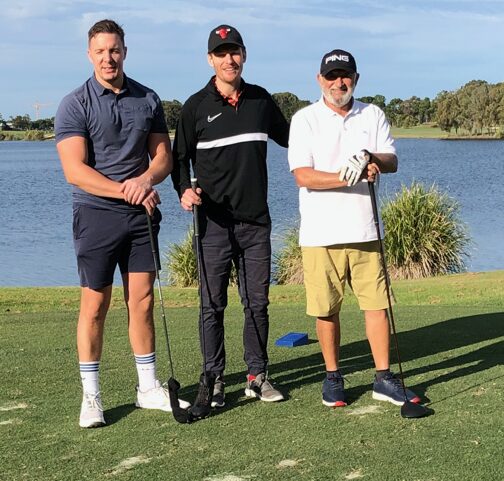
Daniel you’re a neuroscientist – can you tell us what sort of work neuroscientists do?
I guess the term is quite broad. It can range from working under a microscope on a very small scale, to working on the macro scale with MRI and full brain images. I am more of the latter, looking at how different brain areas communicate with each other, and then trying to target them with brain stimulation to help patients’ symptoms. Although I’m not a neurologist or medical doctor, the work I do is quite clinical, meaning that I do it to better our understanding of certain brain disorders, and the aim is also for it to influence clinical practice (e.g. diagnoses, treatments) in the not too distant future.
What led you into this field?
Luck really! I wasn’t the best student in school and always wanted to go outside and run around. I floated through university until I took a course on motor control (the brain’s control of movement), which I found really interesting, and started to become motivated to learn more about the brain. It was a bit of an indirect route until I started a PhD at about 27. I’m glad I did this though, as I got to do lots of travel in my 20s and work other jobs, which often weren’t so interesting or rewarding, so it makes me more grateful to do something I’m passionate about now.
You were awarded the prestigious Brainbox Initiative’s 2021 Young Investigator Award for your innovative dystonia research. What a fabulous achievement! Can you tell us a bit about the research you’re involved in?
Yes, this was mostly based on a study we did in cervical dystonia (CD). We went through the literature and found published cases where brain lesions had caused CD. This happens when for example, someone has a stroke and then a week later develops CD. These instances are rare, but very valuable, because then there is a causal link between the damaged brain region and the CD symptoms. This has been looked at before and hasn’t been that informative though, because the lesions are located in many different areas of the brain. What we did differently is we mapped all the connections of these brain lesions. When we did that, we found that they were all connected to a couple of focal spots in the brain. This study is the basis for our clinical trial at Deakin University now led by Jordan Morrison-Ham, where we try and treat symptoms with non-invasive brain stimulation to this specific spot.
You’ve worked at Deakin University in Melbourne, Harvard University in the USA, Turku University in Finland and you’ll soon be working with researchers in Rome. It’s exciting to think there’s such great worldwide interest in dystonia research. How does this collaborative effort work?
Yes I’m in Finland right now, actually waiting on an Italian visa to move, hopefully by the end of the year. I think dystonia research is really growing. Probably we need to lift our game in Australia a little bit in this regard, as dystonia is well researched in the USA and other countries. I think DNA is doing a great job to raise awareness of dystonia and provide patients with support and resources. I would really like to see more researchers focus on dystonia in Australia. Hopefully we are helping to grow this at Deakin. The international collaborations are much easier now and I’d be lost without them! Things have changed after COVID, where now it really makes not much difference whether you’re in the same city/country or not. Most of the work is done over zoom, email, and data sharing. I collaborate really closely with Prof. Juho Joutsa who I am working with now in Finland, and have done so since 2016. I basically lean on him and involve him in every project I do, as he is a neurologist, so he gives me that clinical expertise I don’t have (and he’s also really smart!).
What are the possibilities that could come out of this research for people with dystonia?
The thing that we are aiming for is to create a brain stimulation treatment for dystonia. This is what our clinical trial at Deakin is testing now. We are doing 10 days of non-invasive brain stimulation (about 2 minutes of actual stimulation per session). The preliminary results we’re seeing really are quite promising and I’m hopeful about this. This type of stimulation is Medicare approved for depression, and migraine and OCD in the USA also. The main difficulty with testing these treatments is that the trials are a bit slow because it’s difficult to recruit patients – we’re really grateful to DNA for helping us with this.
How long do you expect to be in Rome?
I’ll be there for a little under 2 years. I’ll be doing more brain stimulation work in dystonia – so I hope to have some great results when I get back!
Hopefully while you’re in Rome you’ll have time away from work. What’s on your ‘tourist’ to-do-list?
I’ve been to Rome but have to confess I’m a pretty terrible tourist! I would recommend a guided tour of the Colosseum though. I love the coffee and am looking forward to learning the language. But I more enjoy doing things like playing sports and meeting new people. I’m a very keen golfer, and they had the Ryder Cup in Rome last year so I’ll be trying to play that course. So really, my plan in Rome is to drink lots of coffee, get my work done early so there’s still enough light in the day to escape to a beautiful golf course where I can play with some new friends and try to speak Italian with them!
Are you prepared to reveal your golf handicap?
Yes, it’s 9.
Wow! Congratulations on reaching single figures. Do your clubs go with you when you travel?
No, I don’t have them with me. I’m grabbing random clubs from courses each time I play, which I use as an excuse!
Thank you very much Daniel and we wish you all the best with your research and your golf!
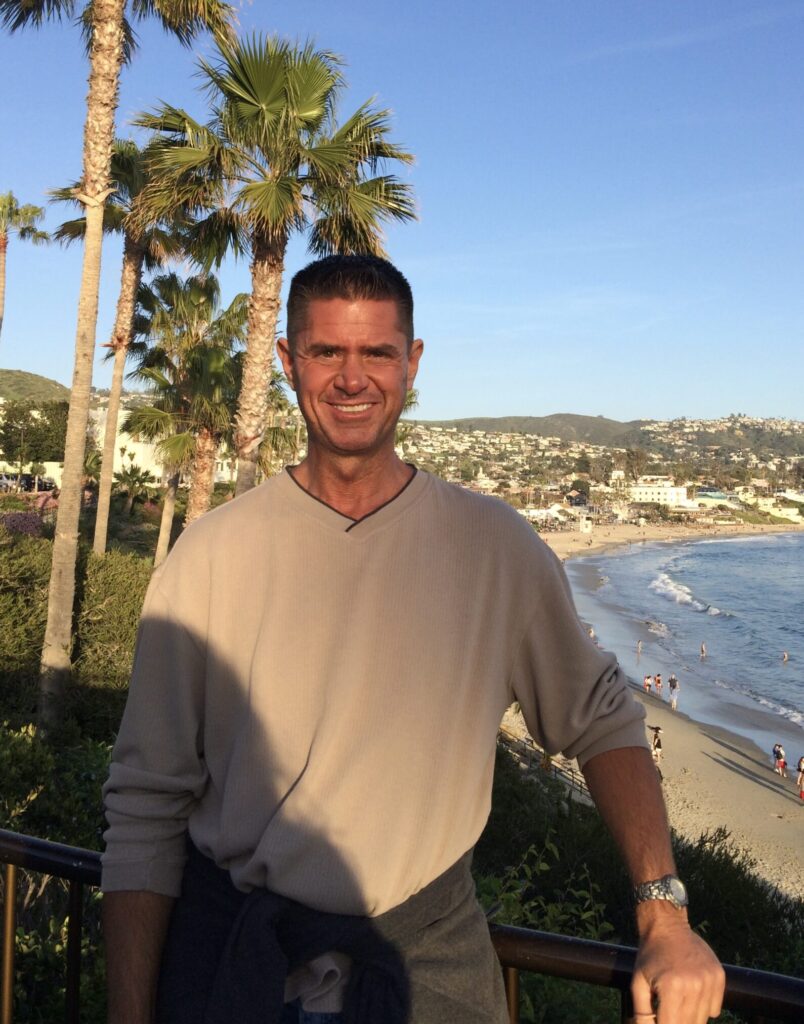
5 minutes with Tom Seaman
Tom Seaman is a Life Coach in the area of health and wellness, and the author of 2 books, Diagnosis Dystonia: Navigating the Journey and Beyond Pain and Suffering: Adapting to Adversity and Life Challenges. He is also a speaker, chronic pain and dystonia awareness advocate, health blogger, volunteer for the Dystonia Medical Research Foundation (DMRF) as a support group leader, and is a member and volunteer writer for Chronic Illness Bloggers Network, The Mighty, Brain & Life Magazine, and Patient Worthy. To learn more about Tom, his books and coaching practice, visit www.TomSeaman.com. Follow him on Twitter @Dystoniabook1 and Instagram @CoachTom12.
Tom what was life like before you developed dystonia?
I was a very competitive athlete, involved in several businesses, active with my family and friends, and at the time of onset, I was attending graduate school for my degree in counseling with many exciting plans for the future.
Tell us about the ways dystonia has had an impact on you.
In the very beginning, the muscle contractions were so severe and the pain was off the charts that I literally lived on my floor rolling around all day. I became very isolated, lost all of my money, and was too disabled to work. I was 30 at the time in the prime of my life but felt hopeless and helpless so I began experiencing anxiety and depression. I also became morbidly obese from a very unhealthy lifestyle.
After about 5 years, I found different ways to better manage my symptoms which gave me hope. I also lost the 150 pounds (68 kilos) I had gained. I then began to write books and articles and it helped people in ways I never expected.
In the beginning, I felt I had lost everything. As time moved on, I realized that dystonia taught me many valuable lessons such as gratitude, strength, courage, perseverance, humility, and compassion. I also learned that I could use my pain and suffering to help others, so in many ways, dystonia has given my life more meaning and purpose.
You’re a certified life coach and active Dystonia advocate. How did that come about?
When I began to get my symptoms under better control in 2007, I was asked by a national organization to share my story in their quarterly magazine. To my surprise, I was contacted by many people who read the story and were looking for guidance. I found myself on the helping end, emailing and talking to people all day trying to provide support. I then started a support group to connect with people even more. Someone suggested that I become a life coach. I investigated it and thought it would be a good path for me to pursue because I am really passionate about helping others.
What are the things you wish you’d known in the early days of your dystonia?
I wish I knew how many treatment options were available and that this condition did not mean a life sentence of pain and misery; that I could again find joy in my life. I also wish someone helped me understand the emotional suffering I was going through so I had better perspective. While the physical pain was extremely difficult to handle, grief about the life I once had was also very prominent, but rarely addressed. Basically, I needed someone to give me encouragement and reassurance that if I keep hope alive and not give up that I could live a meaningful life. I needed someone who had “been there, done that” to let me know everything would be okay. This is one of the main motivating factors for the writing and coaching I do today.
What do you like to do in your spare time?
Being out in nature. I love to tinker around in my garden, take walks, watch the sunset, photography, take care of my plants, spend time near water, and I like to be as active as I possibly can with different forms of exercise within my range of ability. I also enjoy writing (poetry in addition to health topics), so I keep my blog active and write articles for different magazines. All of it is volunteer work which makes me feel good to pay forward the many things I have been given along the way to help me get to where I am today.
What’s something you’ve done that really took you out of your comfort zone?
About 15 years ago I was dealing with severe anxiety and panic attacks. One of the worst triggers for me was driving, especially over bridges. I went 10 years without going down one particular road because of a bridge that terrified me. One day I said to myself, “I can’t keep living like this. It’s self-imprisonment.” I forced myself to go over the bridge and I did it again and again and again. It was incredibly scary at first, but the more I did it the better I felt. In just a couple of weeks, I conquered my fear of bridges, and driving in general, which has increased my boundaries where I can now travel anywhere without fear.
What’s something you’re looking forward to and why?
I’m really looking forward to writing my third book when I find time. I love the creative process and I think the topics I have upcoming will really resonate with people within and outside the dystonia community.
You’ve written books and blogs, done videos and spoken at conferences, so many people know a lot about you. Can you tell us something about Tom Seaman that people would never guess?
I make my own greeting cards with personalized poems. I haven’t purchased a greeting card from the store since probably the 90’s. I also have 70 plants… and that’s just on the inside of my home!
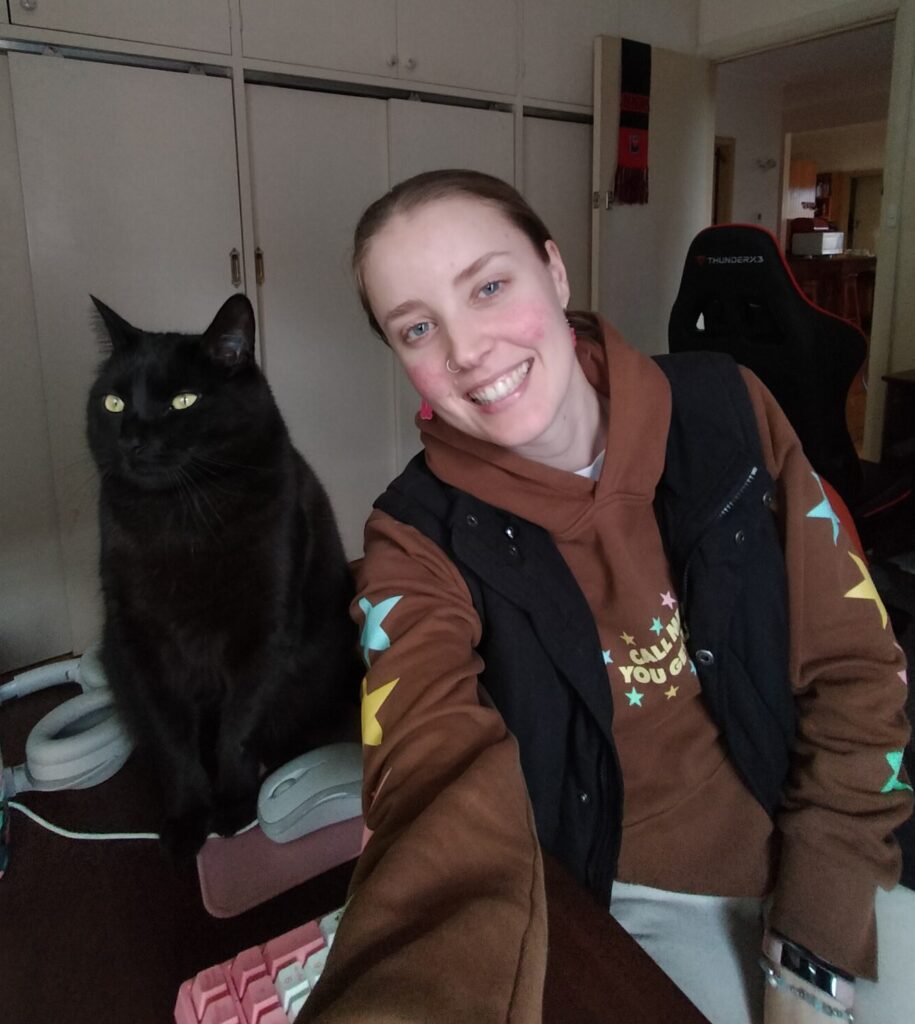
When did you begin your academic journey and what areas of study have you explored?
I began my academic journey studying photography of all things! I received a diploma in photoimaging, and after some time off, decided to go back to school to study psychology. I did both my Bachelor’s and Honours degrees in Psychological Science at Deakin University, and am now finishing up my PhD in neuroscience at Deakin too.
What are you currently researching and what/who inspired you to become involved in this research project?
I’m currently running a clinical trial looking at non-invasive brain stimulation, and whether this could be a new treatment for cervical dystonia. When I decided to pursue a PhD, my supervisor approached me with the idea for the project, and I’ve been interested in dystonia ever since!
What sort of things are involved in running the research project?
A lot of planning, a lot of ethics submissions, and sadly a lot of revising and overcoming obstacles, such as technology deciding it won’t work! Liaising with other interested parties is also quite important – for example, neurologists and other researchers who help to analyse the data. I also spend a bit of time with my supervisor and our team debriefing over coffee after a long session – especially if something doesn’t go quite to plan, or if there is feedback given to us from a participant. And unsurprisingly, there is a lot of answering/sending emails!
What do you hope to achieve with the research project?
Although the main outcome of the project is to determine whether we can use non-invasive brain stimulation as a treatment option, overall, I’d love to spread the word about dystonia and what it is to the general public. Much of the feedback we have received from participants has been that so many people don’t know what dystonia is, including their medical professionals – even I had no idea what it was until I started my project. So I’d love to continue raising awareness whilst trying to find new treatments for dystonia.
Where do you hope your academic career will lead you?
I’d love to continue in the research field – whether that’s running other clinical trials or continuing to work with people with dystonia.
You’re teaching at Deakin University, doing the research trial and completing your PhD – do you have any downtime? How do you find a balance between your work and life outside work?
When I first started my PhD I made a promise with myself to never work on a weekend unless it was desperately needed – and I think that has helped a lot with making sure I have downtime to relax, spend time with my family (and cats!), and take a brain break. I also try not to do too much extra work at home once I’ve left the office for the day. I think this helps with separating my work life and home life, so I can fully relax and become a couch potato once home!
What other things interest you?
I’m a big foodie – I love cooking and trying new foods and cuisines. I also enjoy going out on hikes and spending time in the garden.
Favourite food?
Anything Japanese. If I had to pick one dish it would be tempura vegetables with soba noodles.
What would be your ideal way to spend a weekend?
At the beach, or on the couch with some good food, my cats, and a movie.
Thank you very much Jordan!
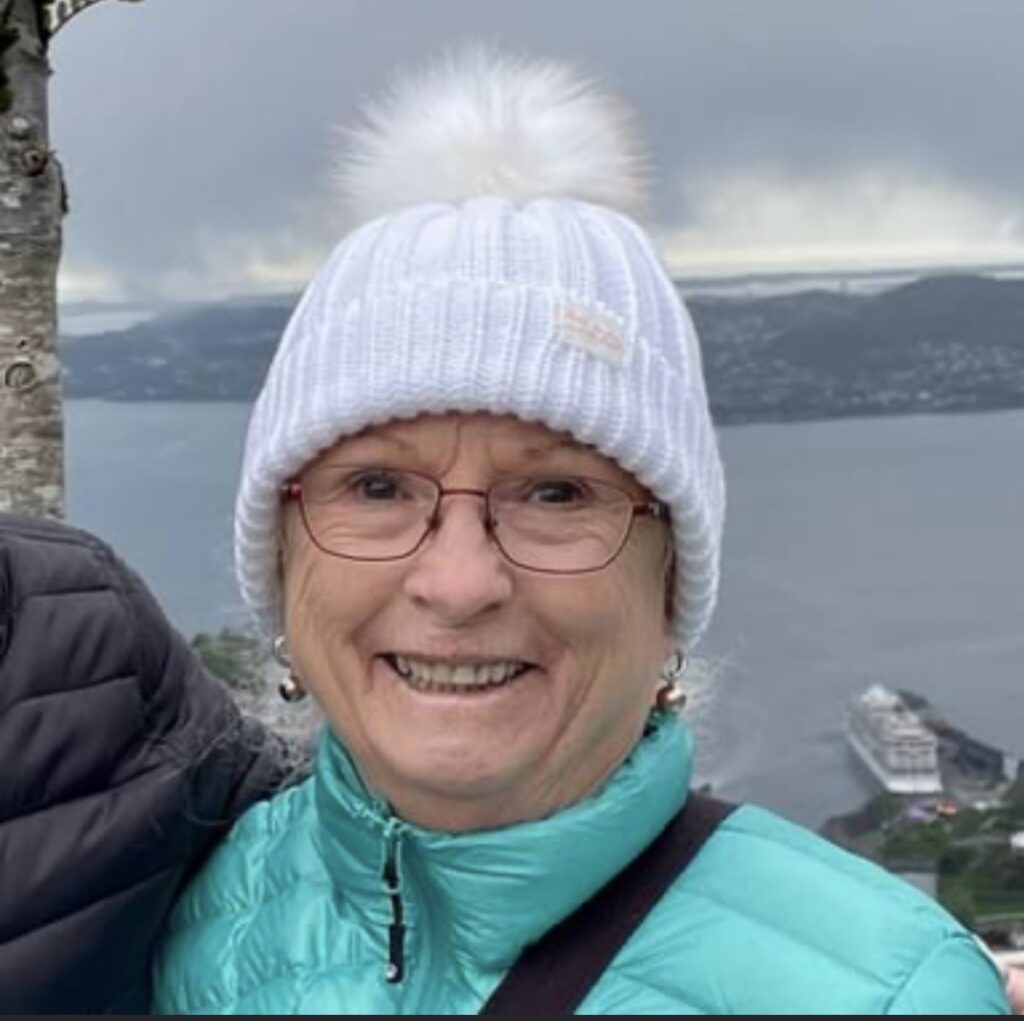
5 minutes with Chris Gavenlock
Chris Gavenlock has been a member and supporter of DNA since its inception. Chris trained as a nurse and has been employed in different areas of nursing. She is a complete livewire who exhausts other people with her energy, enthusiasm, and involvement in many causes and areas of life.
Chris, how long have you had dystonia?
My symptoms first began in late 1983 so it’s been 40 years now. In the 11 years between when I first developed symptoms and when I was eventually diagnosed in 1994, I was continually trying to find an answer to why my hand was not doing what I was asking it to do. I saw many doctors and tried countless therapies to no avail.
Can you tell us about the type of dystonia you have?
I have focal hand dystonia and it affects my right hand. Whenever I try to use my hand for anything, my fingers start clenching towards and digging into my palm and my wrist rolls inwards bringing my hand towards my forearm. I know what my brain is telling my hand to do but my hand seems to ignore my brain and has a will of its own. I can sometimes stop the movements by holding onto something, touching something, folding my arms, etc.
The biggest issue and most noticeable problem is writing and other fine coordinated movements. Over the years, I’ve developed different ways of doing things and using other parts of my body, not normally involved, to assist. Holding a pen in a bizarre manner with my hand and using my upper arm and shoulder has been the only way that I could write legibly.
This has resulted in increased pain and my upper arm, shoulder and neck have been affected as well as my hand.
What impact does dystonia have on your life?
I’m predominately right-handed and not very dextrous with my left hand so there are not many things my dystonia does not affect. Making the bed, washing my face, cleaning my teeth, getting dressed, making a cup of coffee, getting my breakfast, cooking, driving a manual car, etc. Over the years I adapted how I would hold items and carry out tasks using my hand/arm/shoulder – in quite weird postures at times.
Working was difficult and I had to take sick leave, annual leave and long service leave in order to recoup my strength for the daily struggle of performing day to day activities that were so simple for others and so difficult and energy draining for me. I would neglect all but absolutely essential documentation and use either an electric typewriter or computer to maintain records and I had to take regular breaks.
I eventually had to retire from my nursing career in 1997 because of dystonia. At that time I was working in Occupational Health and Workplace Rehabilitation.
What was your journey to diagnosis like?
In 1994 I suggested to my GP that my condition may have a neurological cause. My GP referred me to a neurologist who said that he was fairly sure what my condition was but needed to do some testing to eliminate any other conditions before committing to a diagnosis.
After extensive neurological investigations the diagnosis was – DYSTONIA!!!!!
What a relief to find that someone knew exactly what I was talking about when I described my symptoms and what happened when I attempted to use my right hand/arm. Finally with a diagnosis, and the internet, I was able to do some research. I discovered the Dystonia Medical Research Foundation (DMRF) and found that I was not alone.
My workplace referred me to numerous doctors for opinions on how I could ‘get better’ and work without medical restrictions even though I had dystonia! One doctor suggested that I ‘relax musculature of shoulder girdle and cervical spine’ and increase exercise – regular exercising against progressively increasing resistance with high repetitions and a daily swimming program in a heated pool. It was also suggested that I place a rubber band around the ends of my righthand fingers and thumb and open and close my hand against the resistance of the rubber band whenever possible during the day to strengthen the muscles in my right hand. But I was aware that increased activity exacerbated my condition so I didn’t follow this advice – besides, in regard to the suggested swimming regime, I’d probably drown if I attempted to swim!
Now that I had more time on my hands I continued to research dystonia. It was from the DMRF that I found the International On Line Dystonia Support Group
In March 1996 David Barton from New Zealand came up with the idea of a Dystonia On Line Support Group. Larry Craig from Montreal, Canada and Anne Brett from Texas joined in to assist in the formation of this group. Every Wednesday the group met for chats on the Undernet. This was an international group that continued to grow with people coming together from all over the world. It was such a benefit to find, and talk, with others who knew what it was like living with this weird condition.
You’re an avid traveller. Has your dystonia caused any issues with travel?
The main issue for me when travelling was filling out forms and prior to being able to ‘tap’ credit cards, a huge issue was having to sign for things. My signature was always being challenged! Luckily my husband has attended to anything he knows that I can’t manage.
Tell us about your recent medical intervention?
I’m participating in Dr Joel Maamary’s interventional study using MRgFUS for focal hand dystonia at St Vincent’s in Sydney. I was admitted on the 1st August 2023 for an MRI and neurophysiological testing. I had the MRgFUS procedure the next day and went home the day after that. The following day I returned to Sydney to stay the night and the next day I flew to Thailand!
Immediately after the procedure, I could write and type much better and estimate that there was a 70% improvement in my dystonia. I went back to St Vincent’s on 5th September for an MRI and about 3 hours of testing with Dr Joel who is just as pleased as I am with my progress. I had no side effects aside from being a little unsteady in the ocean on one day when we were in Thailand.
It’s early days and we don’t know the long-term effect that the MRgFUS procedure will have on my dystonia. Participants in this trial commit to return to St Vincent’s at 1 month, 3 month, 6 month and 12 month intervals for MRIs and testing. This procedure is not a cure but, from my perspective, it is certainly looking very promising as a treatment for dystonia. More information about this study can be found here.
Besides travel, what are some of your other interests?
Family and friends, seeing new places and meeting new people. And I’m a consultant for Nutrimetics Skin Care. I help to preserve the history of Morisset Hospital, our local historic mental health facility, where I worked during my nursing career. I’m also involved with Dora Creek School of Arts Inc., which has provided a community hall, solely owned and maintained by the residents of Dora Creek, since 1918. Our hall has regular hirers every day except Saturday and we have a Friday morning Op Shop to raise money to maintain the hall for community use.
Tell us something that few people know about you.
The only thing that brings me to tears with my dystonia is when I’m brushing my teeth and my hand does its ‘thing’ and manages to snap a toothbrush in two. I’m sure I couldn’t do that myself using both hands!
Thank you very much Chris!
Page updated 23 October 2024
